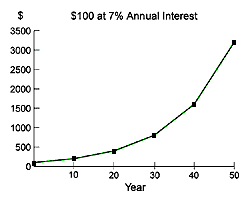
The user can enter the initial amount of the debt, the interest rate, and the amount of the monthly payment. All three of these should be numbers, possibly floating point, for instance, the interest rate might be 13.4 or the monthly payment might be 150.00. If the user enters nothing, or something that is not a number, the program should give an error message and exit. Your program should not crash, no matter what input the user gives.
Every month the interest due is calculated and added to the balance, and then the monthly payment is subtraced from the balance. If the size of the monthly payment is big enough to cancel out the interest, then the balance shrinks and the debt is eventually paid off. If not, the balance will increase forever. This would cause the program to go into an infinite loop. Instead of doing that, the program should stop and tell the that the monthly payment is insufficient.
The interest is compounded monthly; that is, every month, 1/12th of the annual interest rate is paid. So at an interest rate of 16% (typical for a credit card) the monthly interest due on a balance of $10,000 is (16% / 12) * $10,000 = $133.33. If the monthly payment is less than that, the balance will increase forever. If the monthly payment is $200, then the balance after the first month would be $10,000+$133.33-$200.00 = $9133.33.
Every month, your program should print out the new balance (after the deduction of interest and the payment).
The last month will require some special handling; the usual monthly payment will be more than the current balance plus the interest due in the last month. So the last payment, instead of being the usual amount, should be exactly the remaining balance plus interest.
Enter amount of debt: 8000
Enter interest rate: 14
Enter monthly payment: 600
Balance = $ 7493
Balance = $ 6980
Balance = $ 6462
Balance = $ 5937
Balance = $ 5406
Balance = $ 4869
Balance = $ 4326
Balance = $ 3777
Balance = $ 3221
Balance = $ 2658
Balance = $ 2089
Balance = $ 1514
Balance = $ 931
Balance = $ 342
Balance = $ 0
Total payments: $ 8746
Press enter to exit
Here's another example:
Enter amount of debt: 8000
Enter interest rate: 14.5
Enter monthly payment: 50.00
You will need to make bigger payments.
At this rate you will never pay off the debt.
Press enter to exit
Going back and letting the user enter a larger payment would also be
acceptable behaviour (maybe even better...).
For accuracy - to avoid losing money due to round-off - the calculations should be done using floating-point numbers. But for better looking output, you can round everything to the nearest dollar when you print it out, by using the int() function. Or, you can print the floating point numbers with only two decimal places, using a formatting string as described in Lecture on Oct. 13.
You will need a function that checks to see if a string represents a floating point number or not. The isFloat function in the file helper.py does exactly this. In order to have access to this function, you need to put the file helper.py in the same folder as your Python program (or have them both on the Desktop). Here is a little example of a program that uses the isFloat() function: checkFloats.py. Try putting both .py files in the same folder, and running checkFloats.py, and then look at checkFloats.py, to get an idea of how to use the isFloat() function.
Hand in your assignment using myUCDavis. Select ECS 10 from your list of courses on the right. Left-click "Assignments" near the upper left, and then "Project 3". Click on "Drop-Off" and then "Browse". Get to your Desktop, and then to the "ECS 10" folder you made, and finally select your file. The file name should appear in the box next to the "Browse" button. Click "drop-off" to hand in your program. If you are working in the computer classrooms, remember to take your ECS 10 folder, and your program, with you on your flash-drive.